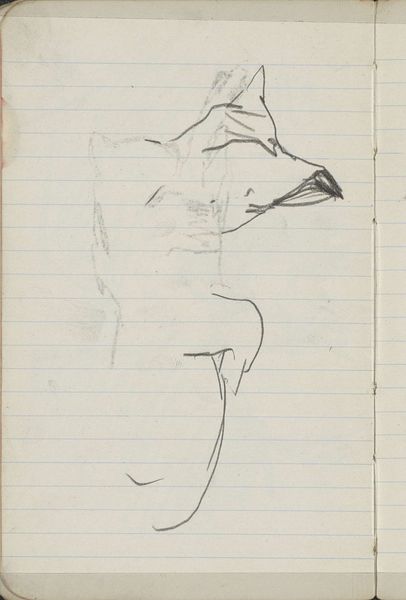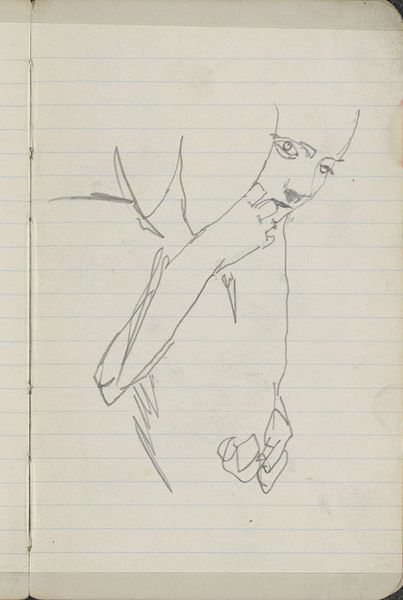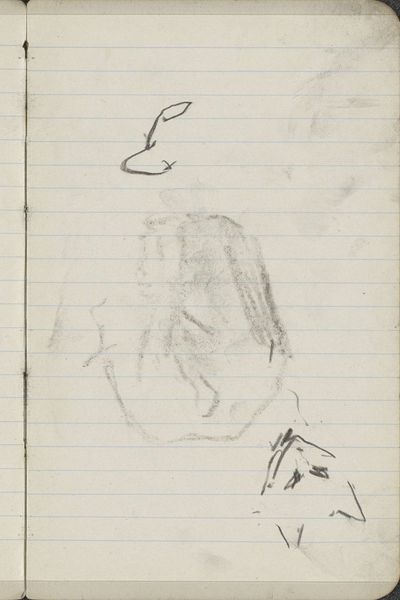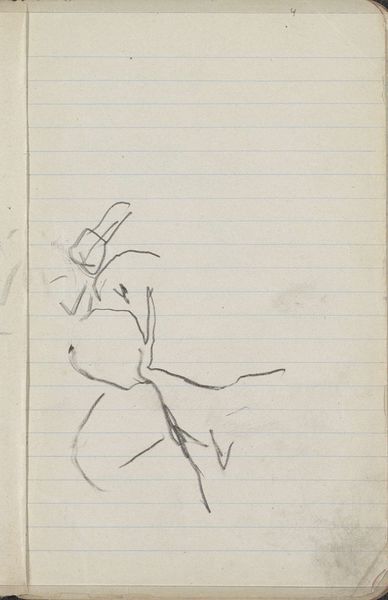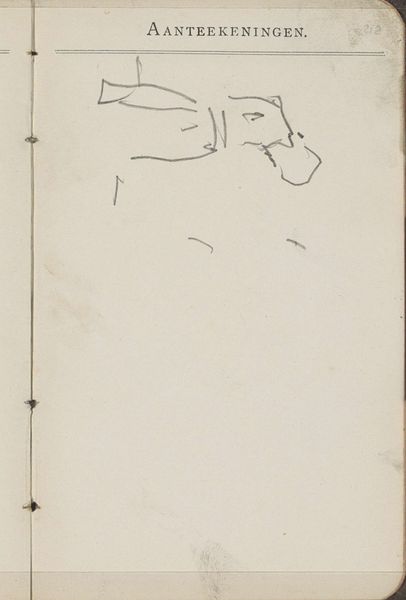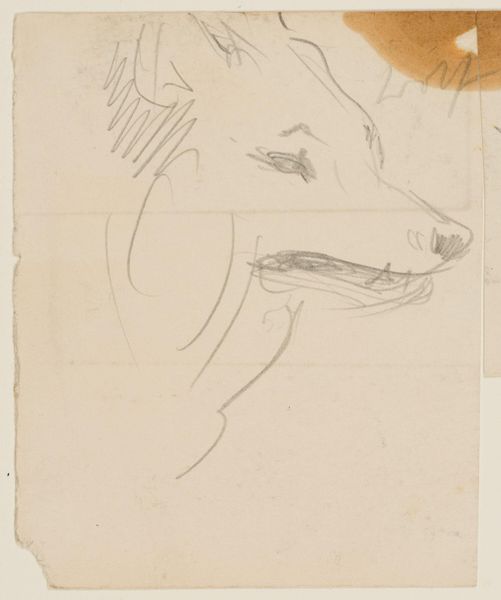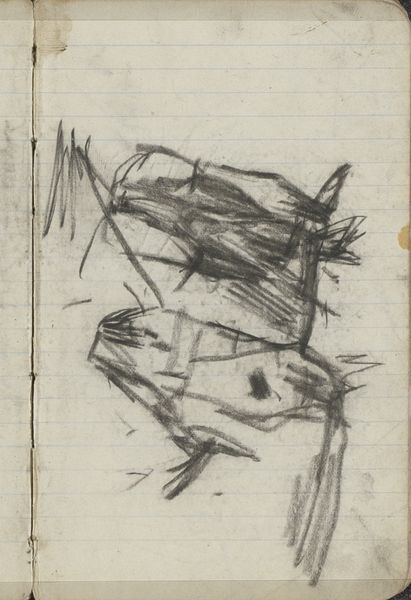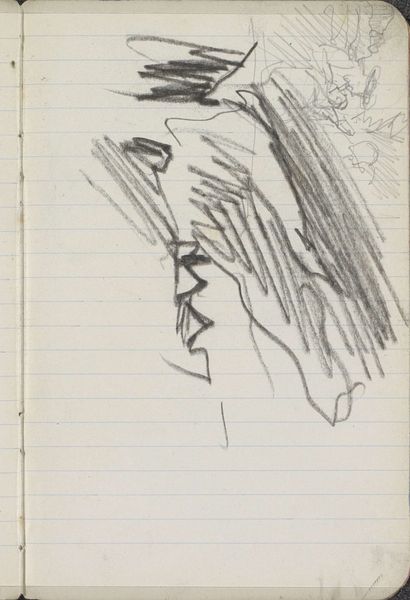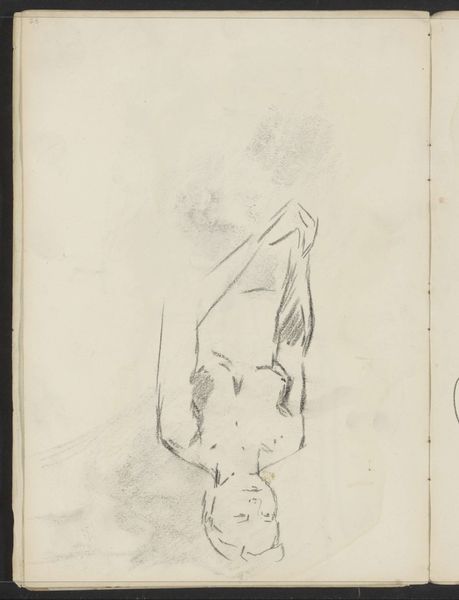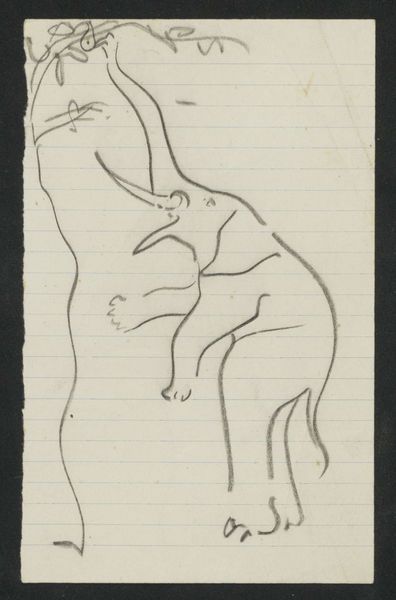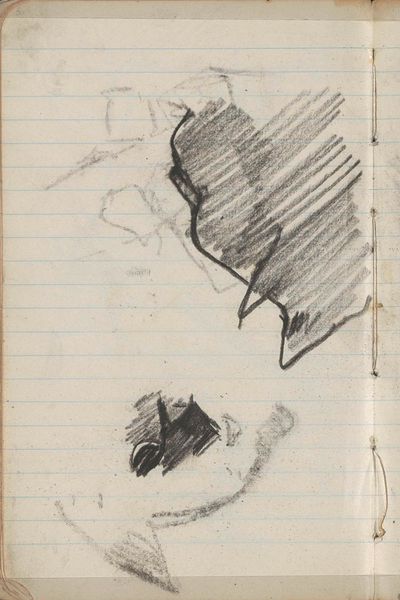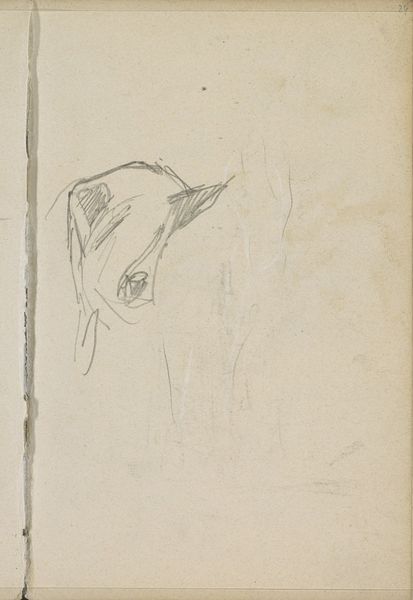
Copyright: Rijks Museum: Open Domain
Curator: Breitner’s “Liggende kat,” or "Reclining Cat," executed in 1893, offers a glimpse into the artist's sketchbook. We can see it's a pencil drawing on paper, currently held at the Rijksmuseum. Editor: Immediately striking! It’s gestural, raw. The cat seems almost suspended in time, like a fleeting thought captured with speed and simplicity. Curator: Exactly! Considering Breitner's milieu in Amsterdam, we understand the role of the sketchbook in Impressionist practice: documenting urban life. This cat might’ve been a fleeting scene amidst the hustle. Pencil as an accessible medium, suited for this recording, speaks to Breitner's direct, unfiltered approach. Editor: And the materials! Cheap paper from a common sketchbook suggests an interesting insight into the artist's workshop practices. It challenges traditional notions of artistic labour—was this practice, a quick study? Curator: Very possibly a study for a larger painting or even something he never revisited. But the materiality itself highlights Breitner's position. Remember, he positioned himself somewhat outside the elite art world, choosing subjects from everyday life. This unassuming drawing underlines his social vision. The choice of material further democratizes the creative process. Editor: It does raise questions about the status of sketches within the art historical narrative, too. We showcase grand paintings in the gallery, but here is an idea of how something started. How art making happens. Does displaying such drawings in institutions perhaps valorize a certain “authenticity” or genius related to the first creative spark? Curator: Precisely. Institutions, like the Rijksmuseum here, often participate in shaping how an artist’s intention is percieved. Think about how an everyday sketchbook becomes "art". The act of exhibiting reframes it, giving it new context, new worth. Editor: And perhaps overshadowing the very spontaneous energy it embodies! Seeing the sketchbook, the paper, makes us also question: who had access to creating art in Breitner’s time and under what socioeconomic conditions. Curator: An excellent point! The drawing, the institution and we visitors are participants of a cycle where value is constantly redefined. Editor: So a humble sketch, in the end, offers complex insights into material, history, labor, and its continuous re-evaluation. Curator: Indeed, a simple sketch reveals much more than its apparent subject, reminding us that artworks, like societies, are processes and constructs, not mere objects.
Comments
No comments
Be the first to comment and join the conversation on the ultimate creative platform.
